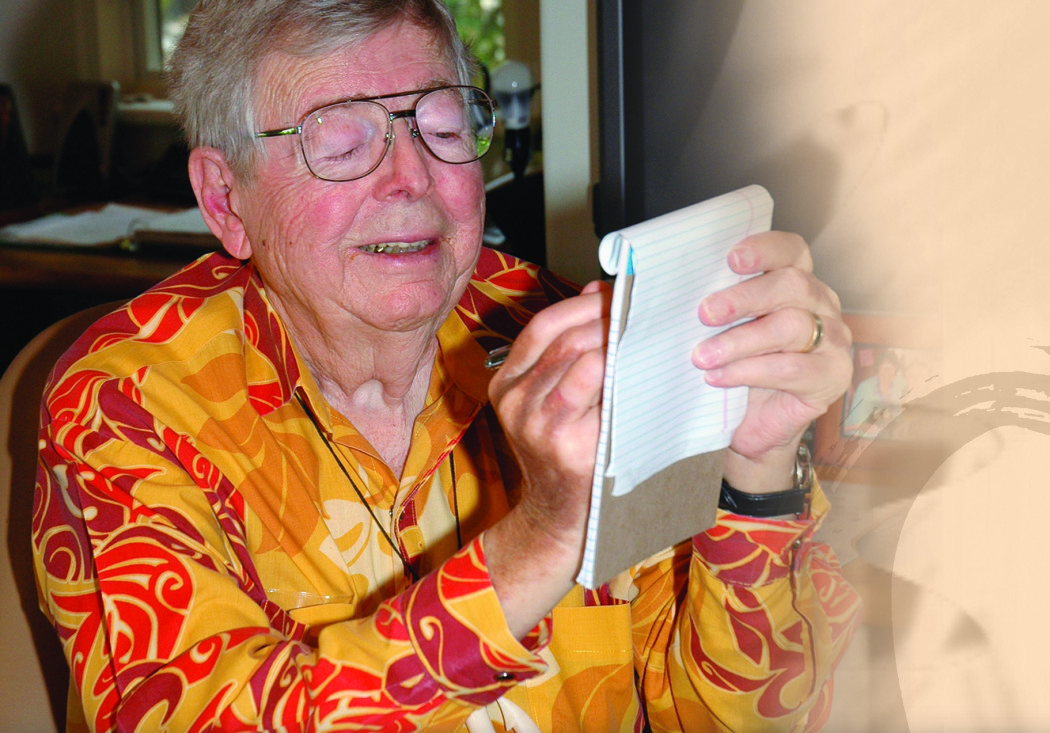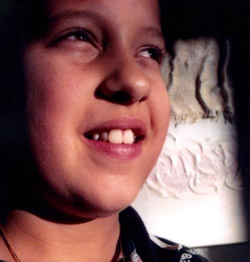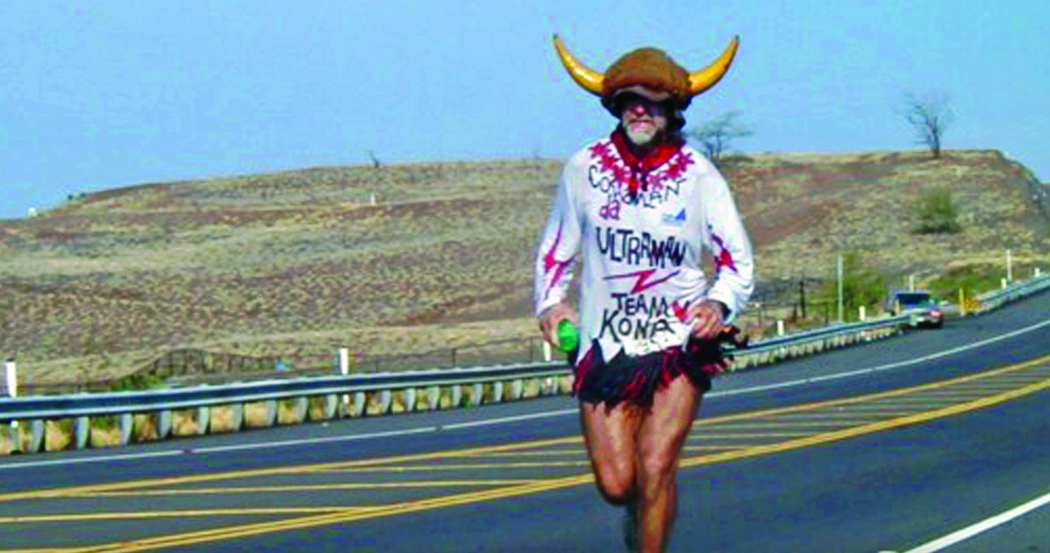
Earl Bakken, at 88, Has Many Dreams Come True
 Visionary Philanthropist Wants Kids to Have a Better Future
Visionary Philanthropist Wants Kids to Have a Better Future
By Fern Gavelek
He goes to bed every night with pen and paper at his side.
“That’s because I dream of ideas while falling asleep,” says Earl Bakken, M.D. HON. C.
One of those ideas changed the world in 1957—an external, wearable, battery-powered, transistorized pacemaker. Four weeks later it began stimulating human heart tissue and saving lives—the first was a little girl in Minneapolis.
As a nine-year-old boy, Earl began dreaming of helping others via electricity, inspired by the movie, “Frankenstein.” He dreamed of becoming an electrical engineer—done. He dreamed of “The Body Electric” and producing implantable pumps for each body area or organ—done. He dreamed of many things, big and small.
Find eight decades of Earl’s dreams—and their progress—at www.earlbakken.com/content/inspiration/dreaming.pdf. The web page provides a peek into the life of Earl Bakken, who lives in a sprawling, oceanside retreat on the Kohala Coast. The Midwest native has been described as “a true pioneer— a person who, through his vision, inspiration, courage and leadership—can change the course of human history.”
An ever-enterprising science and technology buff, Earl lists his first dream of helping others as “done and still going.” While Dr. Bakken has retired at Medtronic, the multi-billion dollar medical technology company he co-founded, he’s “busy as ever” trying to improve the health care and well-being of Hawai‘i Island residents.
“I have been driven by a heartfelt desire to use my knowledge and energy to help mankind,” smiles the 88-year-old. “My life’s intention to help others lives in my heart, even as my mind dreams on.”
One of those initiatives has had a profound effect on Hawai‘i Island residents and visitors. The vision took shape with the opening of North Hawai‘i Community Hospital (NHCH) in 1996. Dr. Bakken was part of the grassroots organization to get a badly needed full-service hospital in Waimea. What he brought to the table was the idea of integrated care—treating the patient at all levels: physically, emotionally, spiritually and culturally.
“Our vision for the hospital was and continues to be to treat the whole individual: body, mind and spirit,” emphasizes Dr. Bakken. He proudly says the hospital has “67 things” that makes it different from other hospitals to promote healing—like the notably wider hallways, colored lighting, oversized patient rooms to accommodate visitors and a meditation garden. There’s also things you can’t see, like power cables that are buried deeper than code to reduce the harmful effects of EMFs (electromagnetic fields).
“To create a blended healing environment, we relied on high-tech science and high touch,” he details, describing “high touch” as a combination of “complementary healing techniques, cultural wisdom, the aloha spirit and feng shui—the human/caring component.”
Hawai‘i-The Healing Island
Once the hospital opened, Dr. Bakken was convinced it was “only the beginning of a much larger enterprise that could rejuvenate the entire island, while offering a whole new concept of health care to the world.” Earl called that dream the “Healing Island” in his 1999 autobiography, “One Man’s Full Life.” In the book, Dr. Bakken says a “Healing Island is in harmony with itself and the world.”
Missions he identified for a Healing Island included:
- Acquire resources and values in health, healing and wholeness that are blessed by the spirit of the traditional culture of Hawai‘i.
- Establish a reputation for Northwest Hawai‘i as a place of beauty and healing where people may, in the spirit of aloha, achieve self-realization and contribute their best to other individuals, society, nature and the land in exchange for a meaningful, happy and satisfying life.
Dr. Bakken explains the Healing Island model “rests on a return to self-responsibility, and its success depends on the involvement of family and community.” In addition, he says the concept relies on education, plus developing incentives and understanding that will inspire healthy behaviors.
To implement tools for achieving a Healing Island, Earl became involved with a handful of programs and nonprofits—some were already getting started and others he initiated. They include Friends of the Future, Tutu’s House, Earl’s Garage, Five Mountains Hawai‘i, The Kohala Center, the Makali‘i Voyaging Project and the North Hawai‘i Outcomes Project. He saw a value in all of them to achieve his dream to make Hawai‘i Island the “Healing Island.”
NHOP Provides Health Data
To have credible health data on Hawai‘i Island, the Earl and Doris Bakken Foundation created the North Hawai‘i Outcomes Project (NHOP) in 1999. It serves as a measurement tool that prepares and analyzes a Hawai‘i Island Community Health Profile. The vision of the project is to provide isle healthcare leaders with data so they can, in turn, better improve health care.
The value of NHOP is illustrated in the reduction of traffic-related deaths in Hawai’i County since 2004. In 2001, the project identified Big Island traffic deaths “nearly three times higher” than state figures. NHOP facilitated a meeting with key stakeholders who formed the Motor Vehicle Crash Reduction Group. The group tackled the issue with a 10-step plan, and the effort garnered $515,000 to fund high-visibility sobriety checks.
Updated every two years and available at www.nhop.org, the Community Profile focuses on 16 identified critical health issues in the community, including “improvement of educational attainment.” That issue has a high priority with Dr. Bakken, who believes “education is one of the most powerful social and economic determinants of health.”
“Kids who drop out of high school die at a higher rate than those who have some college,” shares Earl. Citing 2008 U.S. Census data for people aged 24-65, he notes deaths per 100,000 people were 550 for high school dropouts, 450 for grads and 200 for those with 13 years of education.
“There’s a big difference in the death rates of high school graduates and those with a year of college,” points out Dr. Bakken. “Hawai‘i Island, particularly the West side, needs to offer a 13th year of school. I’ve heard 23 percent of kids on our East Side get a 13th year, and only 9 percent get it on our West Side. I’m all for efforts to build a tech school.”
Tools for a Healing Island
In addition to NHOP, Earl ‘s efforts have been instrumental in promoting community health and wellness. He “helped assemble” health initiatives like Five Mountains Hawai‘i while serving as a “thinker” for organizations like Friends of the Future.
One organization that is “dear to his heart” is Earl’s Garage in Kamuela Business Center (KBC). “It’s where kids go after school and focus on science and technology,” he says. “They compete in robotic competitions.” Also open during school breaks, Earl’s Garage, which started in 1999, offers science exploration projects, mixed with activities that engage the imagination. “We need more Garages as there’s no tech school,” laments Earl, who feels local students should be allowed “now” to be involved with the development of the Thirty Meter Telescope. “Let’s use it as a training tool,” he suggests. www.earlsgarage.org.
Also at KBC is Tutu’s House, a community health and resource center. “It’s got seven non-profits attached to it and offers classes and programs led by experts in their fields to encourage healthy behaviors,” explains Earl. Recent offerings tackled topics like fetal alcohol spectrum disorders, bereavement of a loved one and “Prescription Pain Pills – America’s Newest Epidemic.” www.tutushouse.org.
Also encouraging educational development and healthy behaviors is Five Mountains Hawai‘i, of which Earl is a founding father. Programs include the North Hawai‘i Drug-Free Coalition, Take It (weight) Off Hawai‘i and the Lifeplan Institute Hawai‘i Island. “I love the Lifeplan idea of partnering youth with mentors so they have a plan in place prior to graduating high school,” he says. “It’s doing a good job; we have over 100 kids involved.” www.fivemtn.org.
Earl is particularly proud of the efforts of the Kohala Center. It was founded in 2001 after several North Hawai‘i community forums asked the question, “What would make us a happier and healthier community?” As a community based center for research, conservation and education, it offers educational and employment opportunities through caring for the ‘āina. Work focuses on ecosystem health and self-reliance in the areas of energy and food.
“The Kohala Center brings in college students to use our island as a lab, a classroom,” says Earl, referring to workshops offered by Brown and Cornell Universities. He feels it’s important to “teach kids to do things right to protect the land.” The Kohala Center has several community programs, including the Hawai‘i Island School Garden Network, which involves 63 school and community gardens where people grow food in an outdoor learning lab, www.kohalacenter.org.
Be Part of the Dream
As Dr. Bakken feels the success of Hawai’i Island “depends on the involvement of family and community,” he suggests “all residents, full-time and part-time, get active and involved.”
“There’s a lot to do,” Earl says, when referring to data found in the new 2012 Community Profile. (See sidebar.) “We don’t seem to be doing so great. However, it would be worse if we weren’t doing anything.”
Undaunted and driven by his dream for a Healing Island, Earl adds, “We can achieve this vision by understanding kuleana (the Hawaiian value of accepting responsibility and accountability) and by doing what we can to help organizations already working hard to achieve a Healing Island—with our financial support and our volunteer time.”
And to any dreamers out there, Earl recommends you “chase your dreams as they, along with your visions, have a way of predicting and preceding reality.” ❖
For more information, visit www.earlbakken.com.
2012 Health Profile
Released this spring, NHOP’s 2012 Hawai‘i County Community Health Profile shows the health of Hawai‘i Island residents is worse than the rest of the state. It reports Hawai‘i Island has higher rates of smoking, binge drinking and obesity and there is significantly lower access to healthcare. And while more Hawai‘i County residents age 25 and over have a high school diploma compared with the rest of the state, fewer residents have some college education.
According to NHOP, one of the many ways that education influences health is through income, More education is associated with higher income and better health. Lower income impacts health through living conditions and access to quality healthcare.
Focusing on the economic determinants of health, the 2012 profile reports Hawai‘i Island has:
- A per capita (per person) income of $22,713—trailing all other island counties.
- A 2010 median income of $46,444—again lowest of all counties.
- Nearly one in five residents (18.4 percent) has an income at or below the Federal Poverty Level (FPL)—O’ahu has about one in 10.
Offering ways to improve Big Island health, the profile calls for intervention in three modifiable areas:
- Improve income per capita through educational opportunities and economic and workforce development in education, science, energy and health.
- Initiate system and individual changes to reduce non-healthy behaviors.
- Improve access to healthcare by growing the primary care workforce and increasing the proportion of the population who have healthcare insurance.
For the full report, which also covers access to healthcare and the health status of people divided by life stages, visit www.nhop.org.
Contact writer Fern Gavelek: ferng@hawaii.rr.com


